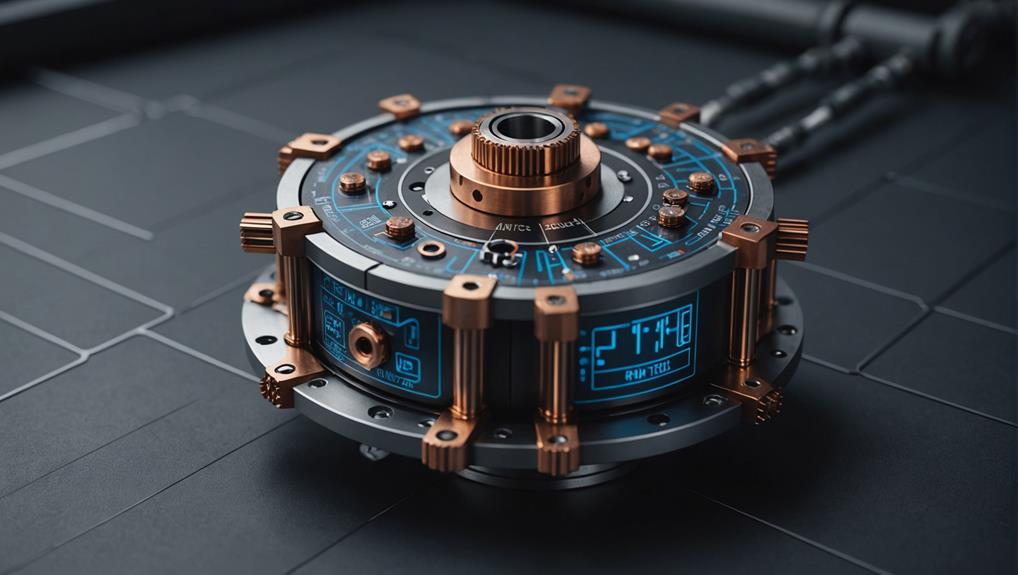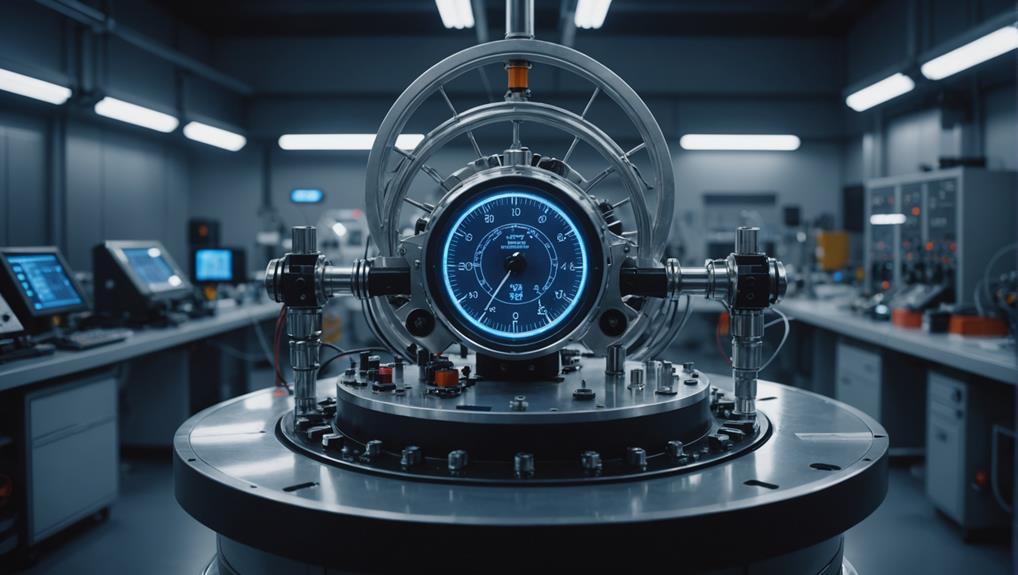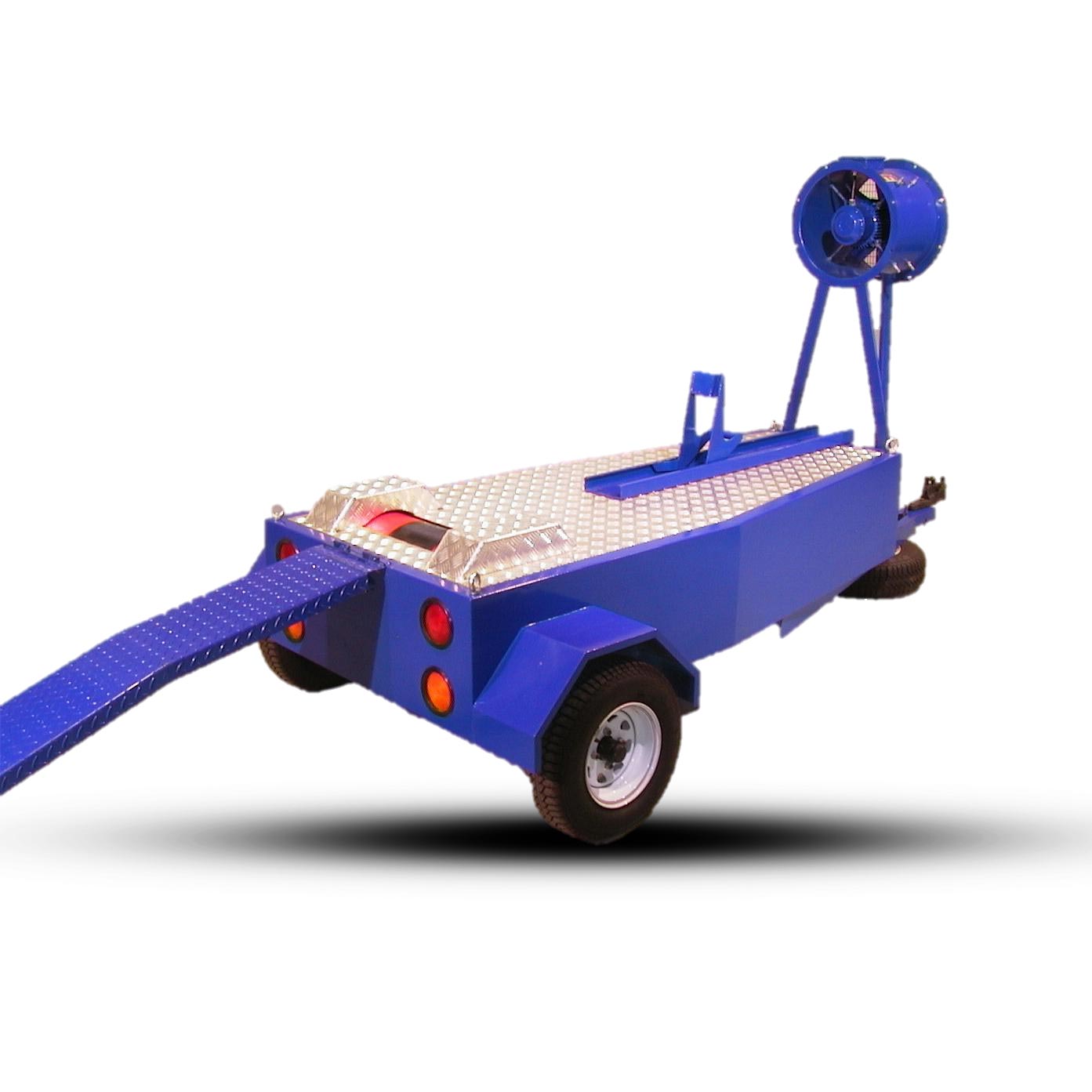
How Dynamometers Enhance Engine Diagnostics and Testing
Necessitating precise measurements, dynamometers unlock the secrets of engine performance, but what else can they reveal about engine diagnostics and testing?
When selecting the best dynamometer for your workshop needs, it is essential to understand your specific requirements and consider key factors such as maximum load capacity, accuracy levels, and remote data reading capabilities.
The type of projects you work on and their frequency will help determine the level of precision and reliability needed.
The size and weight of the dynamometer, plus the type of load measurement device, must be evaluated.
Careful consideration of these factors will enable you to select a dynamometer that meets your workshop's unique demands, and uncover the full potential of your machinery.
A well-equipped workshop reflects a craftsman's commitment to precision and quality.
When selecting the right dynamometer, understanding your specific workshop needs is vital.
A dynamometer measures torque, force, and power, making it a fundamental tool for any workshop.
To determine your workshop needs, consider the type of projects you typically work on and their frequency.
If you specialize in precision engineering or high-performance applications, you require a dynamometer with higher accuracy and resolution.
In contrast, if you primarily work on general machinery or equipment, a more basic model may be sufficient.
The size and weight of the dynamometer are also crucial factors, as you need a unit that can accommodate your largest and heaviest components.
The level of technical support you require is also a key consideration.
Ultimately, your workshop needs determine the ideal dynamometer for your unique requirements, boosting overall productivity and efficiency.
As the cornerstone of any workshop, a dynamometer plays a pivotal role in measuring torque, force, and power.
Selecting the right type is vital for optimal performance. Different types of dynamometers cater to specific workshop needs.
Hydraulic dynamometers, for instance, use a hydraulic brake to convert energy into heat, offering a wide dynamic range and economical dynamic testing.
Eddy current dynamometers, in contrast, use an electro-magnetic brake to load an engine, providing precise and rapid load control.
AC dynamometers use an electric motor to load an engine, offering excellent steady-state and transient control, and can motor an engine for inertia simulation.
Air dynamometers are also available, offering a low-cost and low-maintenance option.
Understanding the characteristics, advantages, and applications of each type is crucial in choosing the right dynamometer for your workshop.
Accurate measurements, efficient testing, and optimal performance can be guaranteed with the correct type.
Selecting the right dynamometer for a workshop requires careful consideration of several key factors.
The maximum load capacity is a critical aspect, directly impacting the accuracy of torque and speed measurements. Dynamometers offer a wide range of load capacities, from 0.1 Nm to 100,000 Nm, ensuring users can find a suitable option for their specific workshop needs.
Accuracy levels are another crucial consideration. Torque measurement ranges from 0.1 Nm to 100,000 Nm, with high-accuracy measurement ±0.1% to ±0.5%. Speed measurement ranges from 0.1 rpm to 100,000 rpm, with high-accuracy measurement ±0.01% to ±0.1%.
The type of dynamometer, such as hydraulic, electric, air, or eddy current, should be chosen based on the test object characteristics, including size, weight, and power output. Remote data reading and available options must also be evaluated.
A dynamometer that meets specific workshop requirements can be selected through careful consideration of these key factors, ensuring accurate and reliable measurements.
Load Measurement Devices Compared
When selecting a dynamometer, it is essential to understand the load measurement devices available, as each type has its unique characteristics, advantages, and limitations.
The three primary load measurement devices used in dynamometers are load cells, torque transducers, and strain gauge sensors. Load cells measure the weight or force applied to an object, providing an accurate reading of the load.
Torque transducers, in contrast, measure the rotational force or torque of an object, making them ideal for applications involving rotational motion.
Strain gauge sensors measure the deformation of an object under load, providing a precise measurement of the load applied.
Factors such as accuracy, resolution, and range must be considered when choosing a load measurement device.
The device should accurately measure the load within the specified range, with a high degree of precision.
Moreover, the device should be durable and able to withstand the environmental conditions of the workshop.
Understanding the characteristics of each load measurement device enables workshop owners to make an informed decision when selecting a dynamometer that meets their specific needs.
Dynamometers have far-reaching applications across diverse industries, where precise measurement of force, torque, and load is crucial.
From ensuring the quality of industrial machinery to optimising the performance of sports equipment, dynamometers play a paramount role in different sectors.
A dynamometer's accuracy and reliability are paramount in ensuring precise measurements and consistent results, as even minor errors can profoundly impact engine performance tuning and resource allocation.
High-accuracy measurements and reliable data collection are vital in high-stress applications, where small variations can have a profound impact on performance and productivity.
Precise measurements are the cornerstone of effective dynamometer testing, as even minor inaccuracies can have far-reaching consequences on engine performance and total efficiency.
High-accuracy measurements are vital in dynamometer testing as they enable precise adjustments to achieve optimal performance levels, with even a 1% error in measurement resulting in significant losses in power and efficiency.
To guarantee high-accuracy measurements, a reliable dynamometer should provide data with an accuracy of ±0.1% to ±0.5%.
This level of accuracy is indispensable in high-performance applications where small variations can make a significant difference.
High-accuracy measurements enable precise adjustments, resulting in optimal engine performance and efficiency.
They also guarantee informed decisions, reducing the risk of costly mistakes and downtime.
Furthermore, high-accuracy measurements provide a competitive advantage, allowing for fine-tuning of engines for maximum power and efficiency.
Accurate dynamometer testing hinges on reliable data collection, which is critical for making informed decisions, optimising engine performance, and maximising workshop capacity.
Consistent and precise measurements are essential, as they enable performance shops, race teams, and manufacturers to trust the data collected. A reliable dynamometer consistently delivers accurate results in repeated testing, whereas inaccurate measurements can lead to poor engine performance and wasted resources, highlighting the importance of precision in high-performance applications.
Reliable data collection facilitates accurate comparisons and informed decisions, allowing for precise adjustments to achieve optimal performance levels.
Minimising re-testing, a reliable dynamometer saves time and resources, streamlining the testing process and increasing workshop efficiency. With reliable data, performance shops can fine-tune engines with confidence, knowing that the results are accurate and consistent.
Prioritising reliable data collection enables workshops to optimise their operations, improve performance, and stay ahead of the competition.
Modern dynamometers often feature advanced data acquisition systems, enabling the collection of precise and detailed performance data.
This data can then be analyzed in real-time, allowing technicians to make adjustments and fine-tune engines with unparalleled efficiency.
In addition, cloud-based storage options provide a centralized repository for data, facilitating collaborative analysis and optimized performance optimization.
In today's high-performance engine testing, data acquisition systems play a vital role in facilitating efficient and accurate analysis of engine behaviour.
These systems enable workshop technicians to capture and analyse diverse performance metrics, including torque, speed, power, and acceleration, providing an in-depth grasp of engine behaviour.
When selecting a dynamometer, consider the following benefits of advanced data acquisition systems:
A dynamometer's real-time data analysis capabilities empower workshop technicians to make swift and informed decisions, leveraging instantaneous feedback to fine-tune engine performance and rectify issues promptly.
This feature enables technicians to monitor engine performance remotely, reducing the need for physical presence and increasing testing efficiency. Instant feedback on engine performance allows for quick adjustments and fine-tuning.
Advanced data acquisition software displays real-time data in graphical formats, making it easier to analyze and interpret results. This enables technicians to identify issues and diagnose problems more quickly, reducing downtime.
Technicians can make data-driven decisions, optimizing engine performance and improving total workshop efficiency. This capability is particularly valuable in high-pressure testing environments where every minute counts.
As the need for efficient data management continues to grow, dynamometers with cloud-based storage options have become a crucial component of modern workshop operations.
These advanced systems enable technicians to access and review test results from anywhere, at any time, fostering a collaborative and connected work environment.
Technicians can access test data remotely, reducing the need for physical presence in the workshop and increasing productivity.
Real-time collaboration is also enabled, allowing technicians to share test results and work together on projects with colleagues and clients from anywhere in the world.
Advanced data analysis tools, including data visualisation and reporting software, are also available, enabling technicians to quickly identify trends and patterns in the test data.
Cloud-based storage options provide a secure and centralised location for storing test data, reducing the risk of data loss and ensuring that critical information is always accessible.
Real-time data streaming capabilities enable technicians to monitor test results as they happen, making adjustments to the test setup as needed.
Workshops can streamline their operations, augment collaboration, and drive innovation by choosing a dynamometer with cloud-based storage options.
Three critical aspects of dynamometer operation are safety features, compliance, and regular maintenance.
A dynamometer's safety features, such as overload protection and emergency stop functions, are pivotal in high-performance applications where small variations can make a significant difference, preventing accidents and minimising risks to guarantee a safe working environment.
Compliance with regulations set by organisations such as OSHA and CCOHS is also imperative to avoid fines and penalties. When choosing a dynamometer, safety considerations, including the maximum axle load capacity, must be evaluated to guarantee it can handle the weight and power output of the test object.
A reliable control system is paramount in this regard, as it enables operators to monitor and adjust the dynamometer's performance in real-time.
Regular maintenance and inspections are just as important, as they guarantee the dynamometer's safety features remain functional and compliant with regulations.
Prioritising safety features and compliance enables workshop operators to create a secure and efficient testing environment that meets the highest standards.
Selecting the optimal dynamometer for your workshop requires careful consideration of several key factors.
Different types of dynamometers, including hydraulic, electric, air, eddy current, and AC, are suitable for specific applications and industries.
When selecting a dynamometer, consider the following key factors:
The type of dynamometer to be used depends on the test object's size, weight, and power output.
The RPM requirements, torque requirements, control tolerances, and test requirements must also be considered.
Evaluating these factors ensures the dynamometer is right for your workshop needs, providing accurate and reliable results.
Choosing the Best Dynamometer for Your Workshop Needs
Understanding Your Workshop Needs
——————————-
At Hyper Power, we understand that a dynamometer is a crucial tool for measuring the torque and rotational speed of engines, motors, and other machinery. To select the most suitable dynamometer for a workshop, it is essential to comprehend the specific requirements and operating conditions of the equipment being tested. This includes considering factors such as the type of machinery, the range of torque and speed, and the desired level of precision.
Types of Dynamometers Explained
—————————–
There are several types of dynamometers, each designed for specific applications. The most common types include hydraulic, pneumatic, and electric dynamometers. Hydraulic dynamometers are suitable for high-torque, low-speed applications, while pneumatic dynamometers are ideal for low-torque, high-speed applications. Electric dynamometers are versatile and can be used for a wide range of applications.
Key Factors in Dynamometer Selection
——————————–
When selecting a dynamometer, several key factors must be taken into account. These include the measurement range, precision, resolution, and response time. The dynamometer should be able to accurately measure the desired range of torque and speed, with a high level of resolution and rapid response time. If you have any questions about our Custom Dyno Solutions, Installation and Setup, Training and Certification, Technical Support and Maintenance, Software Updates and Upgrades, Diagnostics and Performance Analysis, Rental Services, Dynamometer Testing Services, and Accessories and Parts, please do not hesitate to contact us at Hyper Power.
Load Measurement Devices Compared
——————————
Dynamometers can be compared to other load measurement devices, such as load cells and tension meters. While these devices can measure force and tension, they are not suitable for measuring rotational speed and torque.
Industry Applications of Dynamometers
———————————
Dynamometers have a wide range of industry applications, including engine testing, motor testing, and gearbox testing. They are also used in research and development, quality control, and maintenance.
Importance of Accuracy and Reliability
———————————–
Accuracy and reliability are vital factors in dynamometer selection. A dynamometer that provides accurate and reliable measurements is vital for guaranteeing the performance and efficiency of machinery.
Remote Data Reading and Analysis
—————————–
Many modern dynamometers offer remote data reading and analysis capabilities. This allows for real-time monitoring and analysis of data, enabling quick and informed decisions.
Safety Features and Compliance
—————————
Dynamometers must comply with relevant safety standards and regulations. They should also be designed with safety features such as overload protection and emergency stop functions.
Choosing the Right Dynamometer
—————————-
The selection of a dynamometer depends on a thorough comprehension of the workshop's specific needs and requirements. By considering the type of machinery, measurement range, precision, and safety features, the most suitable dynamometer can be chosen to guarantee accurate and reliable measurements. If you require any guidance on selecting the right dynamometer for your workshop, please contact Hyper Power for expert advice on our Custom Dyno Solutions, Installation and Setup, Training and Certification, Technical Support and Maintenance, Software Updates and Upgrades, Diagnostics and Performance Analysis, Rental Services, Dynamometer Testing Services, and Accessories and Parts.
Conclusion
A dynamometer is a vital tool for measuring torque and rotational speed in a workshop. By understanding the workshop's specific needs and considering key factors such as measurement range, precision, and safety features, the most suitable dynamometer can be selected to guarantee accurate and reliable measurements. For more information on how Hyper Power can assist you in choosing the right dynamometer, please contact us to discuss your requirements.

Necessitating precise measurements, dynamometers unlock the secrets of engine performance, but what else can they reveal about engine diagnostics and testing?

Navigating the complexities of torque measurement requires a deep understanding of the underlying principles and mechanisms to ensure accurate results.

Precise control and optimization of engine performance await, but only for those who unlock the secrets of dynamometer-driven data analysis.

Gaining insight into the differences between inertia and brake dynamometers is crucial for ensuring accurate testing results in various industries.

Tapping into the precise measurement capabilities of dynamometers, uncover the secrets to optimizing fuel efficiency and slashing emissions in the automotive industry.

Witness the importance of rigorous safety protocols and best practices in dynamometer testing to avoid catastrophic failures and ensure accurate results.

Harnessing the nuances of precision measurement is crucial to avoiding costly errors in dynamometer testing, but what are the key factors to consider?

Witness the transformative power of dynamometers in unlocking your vehicle’s hidden performance potential, but only if you know how to harness their precision.





